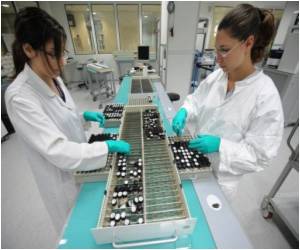Tweezers often come handy while removing splinters or plucking eyebrows.

The group demonstrated that the nanotweezers, fabricated by means of the base-pairing properties of DNA, could be used to keep biological molecules spatially separated or to bring them together as chemical reactants, depending on the open or closed state of the tweezers.
In a series of experiments, regulatory enzymes—central components in a host of living processes—are tightly controlled with the tweezers, which can switch reactions on or off depending on their open or closed condition.
"The work has important implications for regulating enzymatic function and may help usher in a new generation of nanoscale diagnostic devices as well as aid in the synthesis of valuable chemicals and smart materials", said Yan.
Results of the new research appear in the current issue of the journal Nature Communications. Minghui Liu, a researcher in Biodesign's Center for Single Molecule Biophysics and the Department of Chemistry and Biochemistry at ASU is the paper's lead author. Other authors include Jinglin Fu, Yan Liu, Neal Woodbury from ASU and Christian Hejesen and Kurt Gothelf from Aarhus University, Denmark.
Source-Eurekalert








